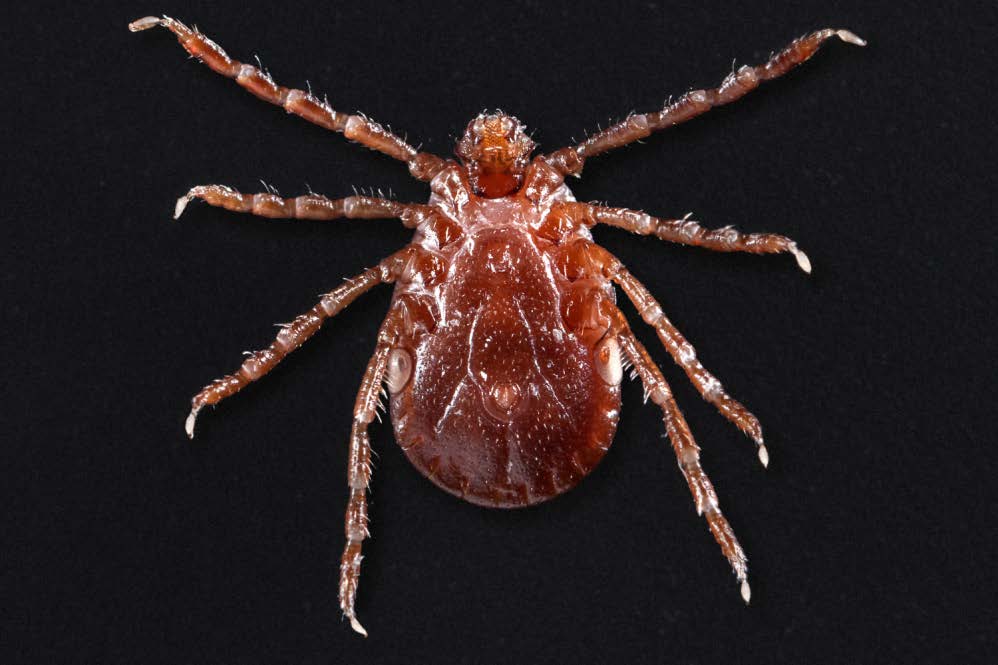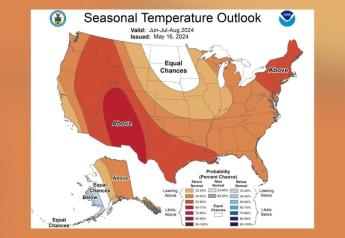Asian Longhorned Tick Now Found in 19 States

Ticks are an issue beef and dairy producers and veterinarians contend with every year. But not all ticks warrant the description USDA offers for the Asian longhorned tick – “invasive pests that pose a serious threat to livestock.”
The Centers for Disease Control and Prevention (CDC) reported in April 2023 that Asian longhorned ticks (ALT) have been found in 19 states: Arkansas, Connecticut, Delaware, Georgia, Indiana, Kentucky, Maryland, Massachusetts, Missouri, New Jersey, New York, North Carolina, Ohio, Pennsylvania, Rhode Island, South Carolina, Tennessee, Virginia, and West Virginia.

When Bovine Veterinarian (a Farm Journal publication) first reported on ALT (Haemaphysalis longicornis) in 2022, it was in 17 states.
Since then, Indiana and Massachusetts have been added to the list.
ALTs Like To Feed On Cattle
The ticks, which originated in East Asia, feed on many hosts, including beef and dairy cattle. Large numbers of ALTs can infest a single host, impacting growth, performance and milk production.
ALT also carry Theileria orientalis (Ikeda genotype), a protozoal organism that causes disease in cattle by infecting red blood cells.
In some regions of New Zealand and Australia, for instance, the tick can reduce production in dairy cattle by an estimated 25%.
In extreme cases, an infestation of ALT can cause bovine deaths, due to blood loss.
An Ohio State University (OSU) assistant professor in veterinary preventive medicine, Risa Pesapane, found that to be the case in 2021. A farmer called OSU to report three of his 18 cattle, heavily infested with the ticks, had died.

“One of those was a healthy male bull, about 5 years old. Enormous. To have been taken down by exsanguination by ticks, you can imagine that was tens of thousands of ticks on one animal,” said Pesapane, in a press release developed by Emily Caldwell, OSU staff writer.
‘Huge Numbers’ Are Often Found
An analysis published in the Journal of Medical Entomology reveals that scientists gathered nearly 10,000 ticks in roughly 90 minutes in the Ohio cow pasture. As a result, Pesapane estimated there were more than 1 million ALT in the roughly 25-acre pasture.
“Where the habitat is ideal, and anecdotally it seems that unmowed pastures are an ideal location, there’s little stopping them from generating these huge numbers,” she said.
One of the factors that make the ALT so difficult to control is the females can reproduce asexually. Researchers say each female can lay up to 2,000 eggs at a time.
The USDA Animal and Plant Health Inspection Service website says "it only takes a single Asian longhorned tick to create a population in a new location."
Target Control Methods Early
Despite applications of pesticides, the ALTs were still present in the Ohio pasture in 2022, the following year, making them what Pesapane called a “long-term management problem.”
“For a variety of reasons, I tell people you cannot spray your way out of an Asian longhorned tick infestation – it will require an integrated approach,” Pesapane said in the news release.
“It would be wisest to target them early in the season when adults become active, before they lay eggs, because then you would limit how many will hatch and reproduce in subsequent years,” she added.
To learn more about how to control ALT, producers and veterinarians can tap into these two resources:
The American Association of Bovine Practitioners addresses control of ALTs in its Have You Herd podcast, which is available here.
Virginia Cooperative Extension offers the online resource, “Managing the Asian Longhorned Tick: Checklist for Best Management Practices for Cattle Producers.”







